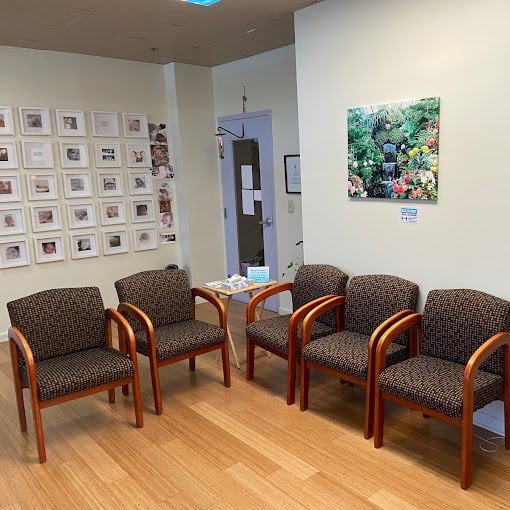Acupuncture for Addiction
Acupuncture treatments and education for smoking and other addictions help the patient manage withdrawal cravings and develop strategies.

Stop Smoking Protocol
SG test
This acupuncture for addiction program is actually for helping a person to manage addiction in general. Specifically, the treatments, patient education, and length of the program greatly help the patient to manage his or her withdrawal cravings and develop strategies (with the help of professional addiction counselors or 12 Step groups if necessary) to cope with social/cognitive aspects of the addiction and avoid relapse.
If a patient is not committed to attempting abstention from the particular addiction, this is not the right protocol. It is not necessary that the patient succeeds in abstaining for two consecutive days, but the attempt IS necessary.
The protocol is structured to support this commitment on the part of the patient to maximize his or her ability to stop performing the behavior to which he or she is addicted.
The initial consultation allows the provider to determine whether there is a need for referrals to additional health care/mental health professionals for co-treatment/care.
Initial Consultation
A thorough intake to determine why a patient is addicted, including what the substance offers the patient.
Example: Nicotine is a stimulant. It can focus the mind and help people manage their appetite. Smoking and other addictions can also seem to help people manage their stress. Ultimately, however, addictions are a second hand high.
It is extremely important to help the patient experience healthy alternatives to addictive behaviors. Dr. Jones created the protocol based on this premise.
Protocol Element 1
10 Electro-Acupuncture Treatments over a 4 week period.
Electro-Acupuncture stimulates the release of opioids, natural pain-fighting chemicals. These opioids greatly help to minimize the withdrawal cravings that make someone want to return to smoking or some other addictive behavior. Acupuncture also facilitates the parasympathetic response, aka, the relaxation response.
First week:
4 treatments within 4 consecutive days, or 2 sets of 2 treatments, each within 2 consecutive days. Second week:
3 treatments, two of which must be within 2 consecutive days if the patient has relapsed. Third week:
2 treatments. Fourth week:
1 treatment.
Protocol Element 2
4 weeks of Chinese Botanical Formulas
These formulas are customized, based on Medical Pulse Diagnosis and through natural chemicals, extend the effects of the Electro-Acupuncture treatments, in-between visits.
Dr. Jones may modify the formula throughout the four weeks of care, to address different patterns of disharmony that may stand in the way of the patient’s ability to achieve success over their addiction.
For example, one person may need more help clearing phlegm in their sinuses and head so that they can have clearer thinking, and thus avoid the need for a return to a stimulating, but addictive behavior like smoking. Another person may need botanicals that can clear biofilms, the damp substances in which unfriendly flora (fungal, bacterial infections) thrive.
People who smoke to avoid overeating can greatly benefit from this approach because it makes them less captive to microbes that literally send chemical messages to be fed unhealthy food and drink.
Protocol Element 3
Gaso-transmitter Therapy
Otherwise known as Qi Gong, or meditative breathwork, these simple exercises complement the effects of both Electro-Acupuncture and Chinese Botanical Formulas in helping patients manage their sensitivity to stress, a major factor stimulating addictive behavior. This helps patients to be able to stop smoking or other addictions.
Protocol Element 4
Supplements
Certain vitamin and mineral supplements complement the actions of the other parts of the protocol, especially when the patient is under high stress and has a diet poor in key vitamins and minerals.
Protocol Element 5
Instruction in Primordial Sound Meditation
Last, but not least, Dr. Jones offers a class in Primordial Sound Meditation, an effortless meditation technique that offers a real substitute for the lower grade high of any addiction.
Addictions originate in the cycle of Action, Memory, and Desire. People begin smoking or some other addictive behavior. This generates a memory of pleasure, which leads to the desire to commit that action again. Without an effective alternative, the action becomes habitual.
Regular practice of Primordial Sound Meditation
- Overshadows the memory provided by addiction, with one that provides greater joy/pleasure/fulfillment and thus a stronger memory than that provided by the memory that led to addiction.
- Meditation facilitates transcendence from the field of memories to the field of pure potentiality.
- In that higher level of consciousness, we seed new memories of love and joy, and also of pleasure, diminishing desire for the lower grade high of addiction.
![]()
Did You Know?
Misunderstandings about acupuncture and Chinese medicine obscure its physiological basis.
There are misunderstandings about keywords and concepts in Chinese Medicine that often hinder the ability of people to see that Chinese Medicine is in fact, an empirical medicine, rooted in keen observation of physiology.
For example, the Chinese word “Qi,” is thought by most in the West to mean “energy.” However, this understanding is based on a mistranslation by a 19th-century French diplomat. Sinologists all agree that there are many different meanings for Qi, but not one of them is “energy.” The main meaning of Qi is “vital air,” which was the ancient Chinese expression for what we now know is oxygen, and other gases in our body. While many people may be attracted to the idea of medicine that manipulates “energy,” others, including important institutions in a Western society like modern medicine, are often repelled by this idea.
Another example is the concept of Acupuncture meridians. Most people in the West, including most Acupuncturists, have been taught that Acupuncturists insert needles along lines of invisible energy pathways called “meridians.” In truth, these “meridians” are pathways that correspond to major longitudinal blood vessels, fascial planes and lymphatic and nerve pathways. This physiological connection between Acupuncture points along vessels, and other physiological pathways, points to the ancient Chinese understanding of the human body. In fact, the Chinese were conducting autopsies, 500 years before Christ.

What to expect during your acupuncture treatment
- Relaxation is key: Settle in for a calming 30-60 minute session where fine needles are gently inserted at specific points based on your individual needs.
- Minimal discomfort: You may feel a slight, momentary sensation during needle insertion, followed by a wave of deep relaxation.
- Personalized care: We tailor each treatment plan to your unique concerns and goals, ensuring a safe and effective experience.
After your acupuncture treatment
- You may feel relaxed or energized. Remember, individual responses vary. If symptoms don't improve within a few weeks, discuss it with your practitioner.


